Pomade (hairline) acne: causes, prevention and treatment
Pomade acne is caused by using hairstyling products such as pomades and hair gels that clog the hair follicles, leading to acne breakouts. Prevent and treat this type of acne.
Table of Content:
Causes of pomade (hairline) acne | What does it look like & symptoms? | How to prevent it and get rid of it? | Treatment | Ingredients that cause pomade (hairline) acne
Our commitment to producing high-quality content:
The information presented in this article is based on scientific research and the professional advice of our Content Medical Reviewers, who are experts in the field of Dermatology. How we write our content →
What is pomade (hairline) acne?
Pomade acne (also known as hairline acne) is a type of acne that is caused by the use of hair styling products such as hair pomades, oils, and gels that contain pore-clogging ingredients linked to comedone formation. Pomade acne is different from acne cosmetica but closely related since they are both caused by the products used by individuals; however cosmetic acne, is caused by skincare products instead of hair styling products1.
Pomade acne typically occurs along the hairline, forehead, temple cheeks and ears where hair styling products are most commonly used. Typically, pomade acne presents little to no inflammation2. The use of hair oils was the most significant predictor of acne severity3.
Pomade acne is more common in people with curly hair or people of African descent, as they tend to use these products more frequently4. Applying hair oil/ grease to hair edges can contribute to pomade acne along the forehead and temples5 6.
Causes of pomade or hairline acne
Pomades and other hair products can cause acne because they typically contain ingredients that clog pores and trigger inflammation in the skin.
Some of the common ingredients in pomade (such as petroleum jelly, mineral oil, and lanolin) are known to be comedogenic7, which means they can block the pores and promote the formation of acne.
Furthermore, pomade and other hairstyling products can also help trap dirt, sweat, and bacteria on the skin, which further contributes to the development of acne. People who use pomade frequently or leave it on their hair for extended periods of time are at a higher risk of developing pomade acne.
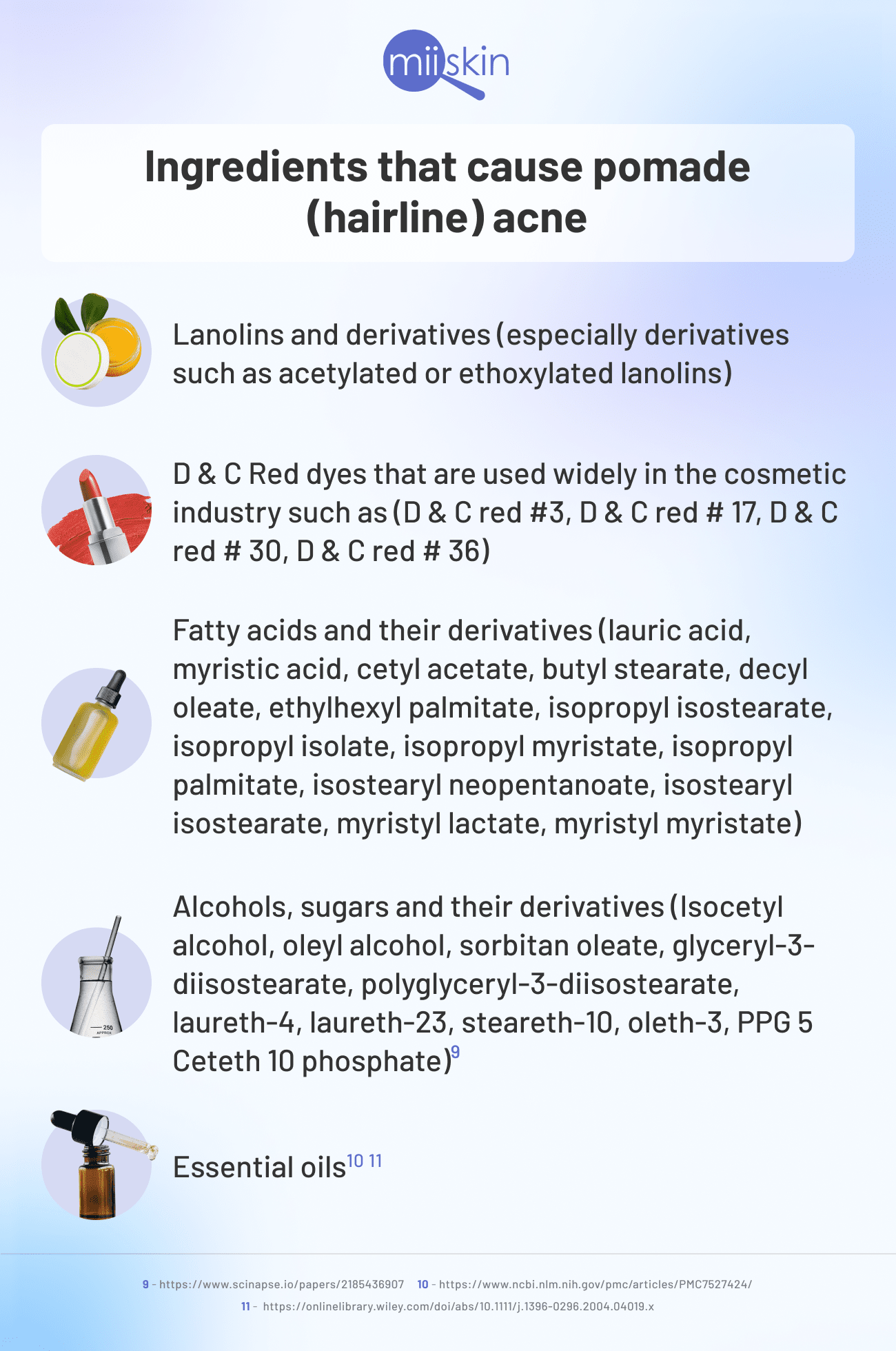
What does pomade or hairline acne look like?
Acne that is caused by pomade or any other hair products usually appears in the scalp, hairline, forehead, temples, neck and cheeks. Typically, it appears as closed comedones or white heads8.
Symptoms of pomade or hairline acne
The symptoms of pomade acne can vary in severity, but typically include:
- Pimples or small bumps on the scalp, forehead, temples, hairline and neck
- Closed comedones (whiteheads)
- Itching or burning sensation on the hairline or scalp
- Oily or greasy skin
Pomade acne can easily be mistaken for acne vulgaris, so it is best to consult a dermatologist to get an accurate diagnosis and adequate treatment.
Consult a Board-Certified Dermatologist Now!
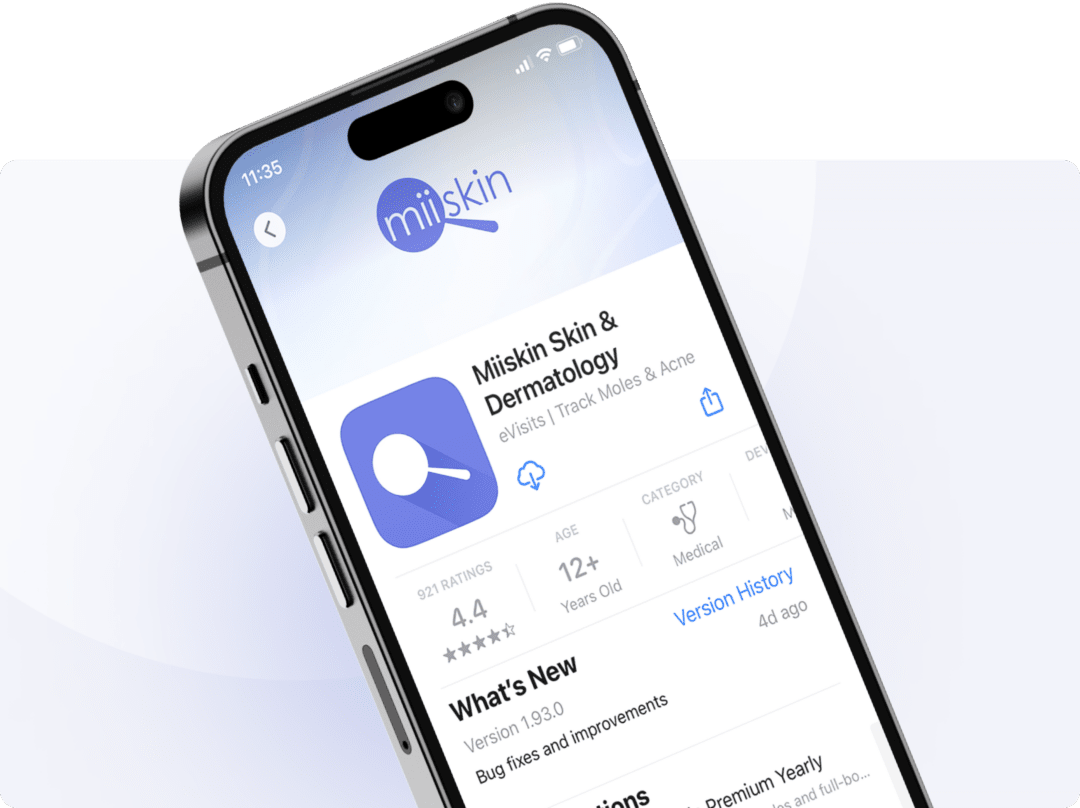
Download the Miiskin app to connect with independent, board-certified dermatologists who are licensed in your state. Answer a few questions, upload some photos and get a treatment plan in 1-2 days. Consultation price is $59 and medication renewals are only $39.
Online dermatology care is ideal for chronic dermatology conditions.
How to prevent and get rid of pomade (hairline) acne?
Here are some tips to prevent and get rid of pomade acne.
- It is recommended that you avoid products that may cause breakouts (look for the ingredients that can clog pores below)
- But if you decide to use the product anyway, wash your hair at night to remove any excess hair product, oil, dirt, and sweat
- Rinse your skin thoroughly to avoid any hair product residue that are causing the acne (pomade, or other hair products)
- Use a soft hair band or cap to keep hair out of your face when you sleep
- Do not use hairstyling products at the gym because the sweat and hair product will reach your skin
- Use a mild, non-comedogenic cleanser to wash your face twice a day (and after sports)
- Use a non-greasy, oil-free moisturizer to keep the skin hydrated
- Avoid touching your face or picking at the acne, as this can worsen the condition
- Try a customized medicine with salicylic and lactic acid or benzoyl peroxide
Pomade (hairline) acne treatment
Click on the “start a consultation” button below to request a consultation with a dermatologist and get an accurate diagnosis and a prescription for acne treatment (such as topical retinoids or antibiotics).
You may also need to switch to different hair products, use topical or oral medications, or a combination of both. With proper treatment, most cases of pomade acne can be effectively managed and improved.
Conclusion
Pomade acne is a common problem that affects individuals who use pomade or other hair styling products regularly. This condition occurs due to certain ingredients included in these products block hair follicles and cause inflammation.
Consult a dermatologist for professional advice and treatment if this condition worsens or persists.
To prevent hairline acne, it is important to choose hair styling products that are non-comedogenic and water-based. It is also essential to wash your hair regularly, especially at night before going to sleep to remove excess product build-up. When styling your textured hair, make sure the hair styling product is not touching the scalp.
Need Expert Dermatologist Care?

Get expert advice from a licensed online dermatologist by simply uploading photos from your phone. If needed, a prescription (branded or generic depending on preference) will be sent directly to your favorite pharmacy. Nationwide coverage.
Article References:
1 https://www. Researchgate.Net/publication/7289458_a_re-evaluation_of_the_comedogenicity_concept
2 https://www. Researchgate.Net/publication/294287888_pomade_acne
3 https://www. Researchgate.Net/publication/294287888_pomade_acne
4 https://www. Researchgate.Net/publication/294287888_pomade_acne
5 https://pubmed.Ncbi.Nlm.Nih.Gov/14604079/
6 https: //practicaldermatology. Com/articles/2015-may/contemporary-african-american-hair-care-practices
7 https://pubmed.Ncbi.Nlm.Nih.Gov/6229554/
8 https://www.Researchgate.Net/publication/294287888_pomade_acne
9 https://www.Scinapse.Io/papers/2185436907
10 https://www.Ncbi.Nlm.Nih.Gov/pmc/articles/pmc7527424/
11 https://onlinelibrary.Wiley.Com/doi/abs/10.1111/j.1396-0296.2004.04019. X



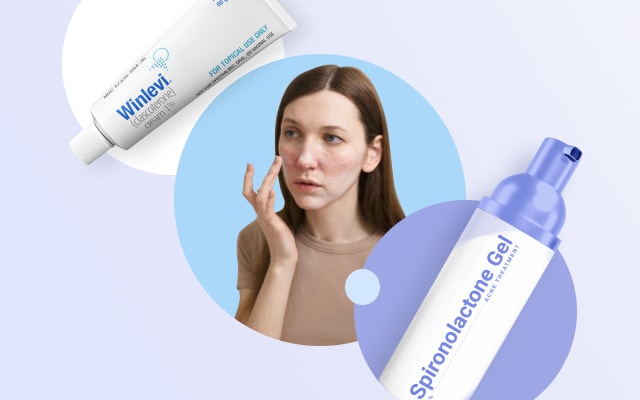
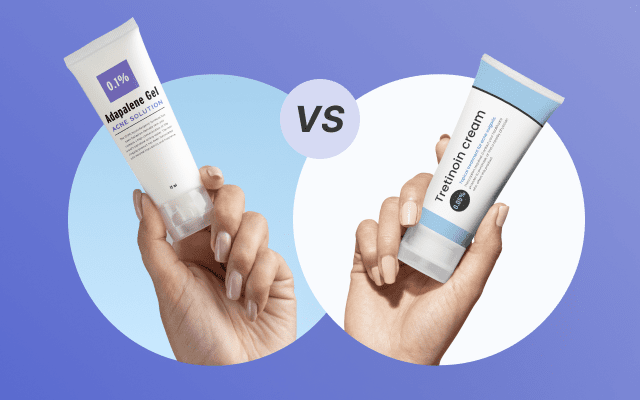
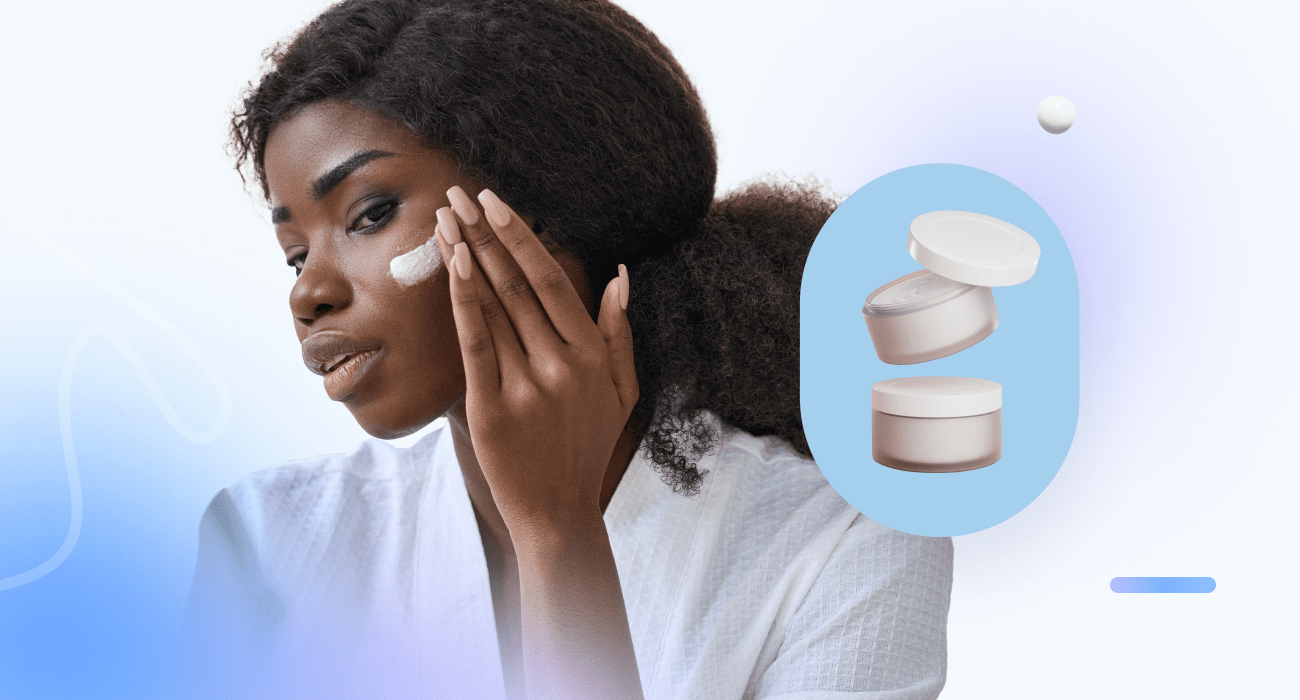
 Interested in getting acne treatment?
Interested in getting acne treatment?